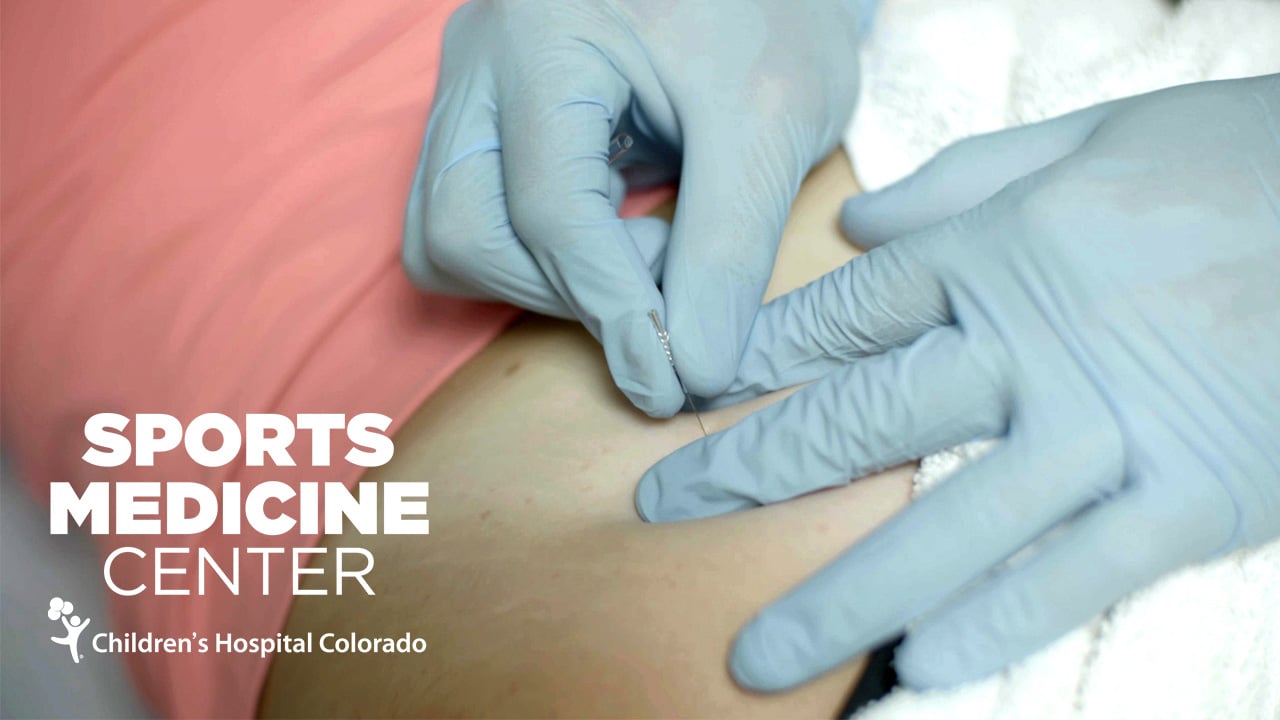Do you hear your child and/or your players complaining about sore muscles? It's not uncommon in youth athletes, but that doesn't mean it should be ignored. The good news is, dry needling is a therapy that can help relieve tension and heal muscles efficiently to prepare athletes for their next game. But is it right for your child? Experts from Children's Hospital Colorado break down everything you need to know.
Dry needling might sound unpleasant, but according to our physical therapist Kristine Rabin, PT, DPT, it’s similar to a deep-tissue massage.
“We all have trigger points in our muscles that cause us pain,” she says. “The goal is to relax the muscle and relieve tension.”
Those trigger points — sometimes called “knots” — result from a buildup of naturally occurring chemicals in the muscle. In athletes, it’s often due to repetitive movements or trauma from getting hit.
How does dry needling work?
During a deep-tissue massage, a massage therapist would work knots out using the hands. Dry needling, says Rabin, gets right to the source.
“With massage, it might take 15 or 20 minutes to work out that trigger point, whereas the needle can go deeper much more quickly.”
Specialists who perform dry needling use the same type of needle as acupuncturists, targeting individual trigger points. During the procedure, a physical therapist specially certified in dry needling works the needle deep into the muscle, sometimes close to the bone, and punctures the knot. This releases chemical buildup and increases blood-flow and oxygen to promote healing.
Should I try dry needling?
Dry needling is not for everyone, and practitioners say much research remains to support how and why it works. Still, Rabin says she’s seen plenty of evidence that it does, and young and adult athletes alike increasingly seek it out.
Children’s Colorado’s Sports Medicine Center offers dry needling by certified, pediatric-focused physical therapists at locations all over the Front Range.
“The idea is that it resets the muscle,” says Rabin. “And of course we always follow up with corrective exercises to retrain the muscle to fire correctly, so that it doesn’t go right back to what caused it in the first place.”
Learn more about preventing and treating sports injuries from our Sports Medicine Center experts.

